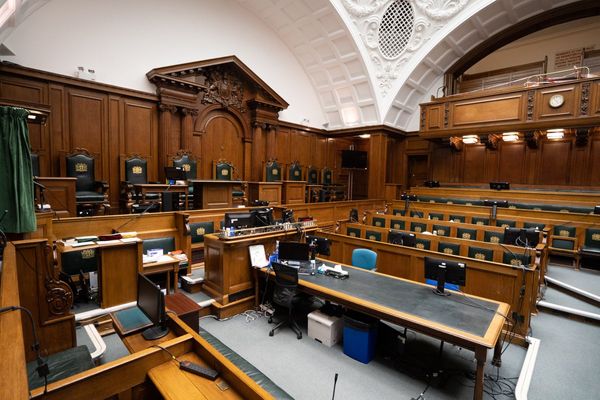
This is a whiplash budget in terms of fiscal outcomes. We’re going from what the government expects to be a surplus of 0.3% of GDP this current financial year, to a whopping $28 billion, or 1% of GDP, deficit, in the financial year starting on July 1. And it’s supposed to get even worse after that, with an eye-watering $42 billion deficit the year after — although our recent fiscal experience suggests that is too far away to take seriously.
It’s the biggest fiscal turnaround since the pandemic pushed the Morrison government from a budget within a whisker of being balanced to successive deficits totalling $220 billion, and before that when the financial crisis saw the Rudd government, which inherited a $20 billion surplus, switch to more than $80 billion in deficit spending over 2008-10. Another point of comparison is the Whitlam government’s budgets in 1973 and 1974, which ramped spending up dramatically — 20% and then 16%! — just as the oil crisis was hitting, sending the budget deep into deficit (Jim Chalmers won’t appreciate the Jim Cairns reference).
But there’s no financial crisis or pandemic or even oil shock in the offing that we know about. Sure, “the global outlook remains complex and uncertain”, Treasury says in its international commentary in the budget, though it sees the main risk as inflation staying higher for longer, and studiously ignores that the leading contender for the US presidency is intent on launching a global trade war. The only thing that could possibly account for such a dramatic surge in stimulatory spending is… the next federal election, due by the middle of 2025.
The huge projected deficit has produced howls of rage from the neoliberals at the Financial Review, but for once, they have a point — where is the rationale for such a huge deficit next year? And if the budget papers have any credibility at all, why is the government committed to blowing the deficit out still further the following year?
Right-wing economists insist that it will all end in tears as Labor’s spending pushes inflation up and drives interest rates higher — although given that they already think interest rates are too low and want several more rate rises to really punish workers properly, that’s nothing new. That mob reckon an interest rate rise is needed if someone wins a meat ray down the pub.
The disturbing element to the budget numbers is that this swing deep into deficit appears to accomplish little in the way of boosting the economy. The economy will grow slightly more strongly but unemployment will rise, wages growth will fall and indicators like household consumption and business investment will barely show signs of life. Treasury effectively says in the budget papers that Labor’s huge spending is what will encourage what little life there is in the economy over the next 12 months.
Households have pulled back sharply on consumer spending in response to sustained cost of living pressures and higher interest rates. However, higher wages growth, the forecast moderation in inflation, continuing employment growth and the Government’s cost of living tax cuts are expected to support real household disposable incomes and household consumption from the second half of 2024 … There remains significant uncertainty around the responsiveness of household consumption to evolving economic conditions. While aggregate real household disposable income is expected to pick up in 2024-25, households will still face tight budgets and may look to replenish savings as their real incomes increase. A faster-than-anticipated softening in labour market conditions could also temper the recovery in consumption.
That is, there are downside risks to the economy despite all this stimulatory spending — a view the RBA shared in its May Statement of Monetary Policy last week.
The scenario being conjured by neoliberals and business shills is of rampant Labor spending driving inflation up and forcing the Reserve Bank to lift interest rates again and again. Which, indeed, is possible. But there’s an alternative scenario as well, one Treasury alludes to, in which consumers are so burnt by the Reserve Bank’s punitive rate rises that they keep their tax cuts and $300 electricity rebate and sit tight. Coupled with a sudden lurch upward in unemployment, the economic story might turn decidedly gloomy, and Labor’s deficit spending might start to look not so much profligate and political — which it undoubtedly is — as barely enough to prevent a recession.
Which scenario is more likely? Or will we just muddle along as the budget forecasts, with tepid growth but low unemployment? We’ll tell you this time next year…
Will Labor’s big-spending budget be enough to keep the economy afloat? Or is it just passing pain down the line? Let us know your thoughts by writing to letters@crikey.com.au. Please include your full name to be considered for publication. We reserve the right to edit for length and clarity.







